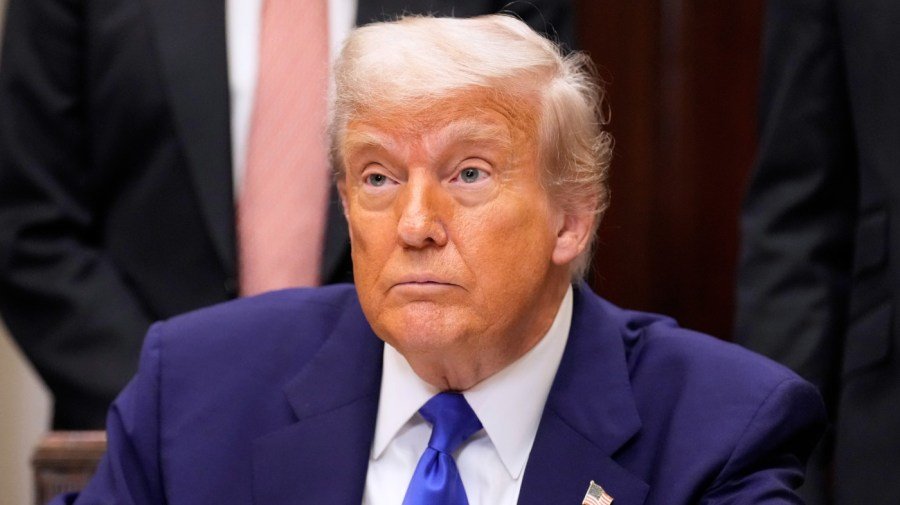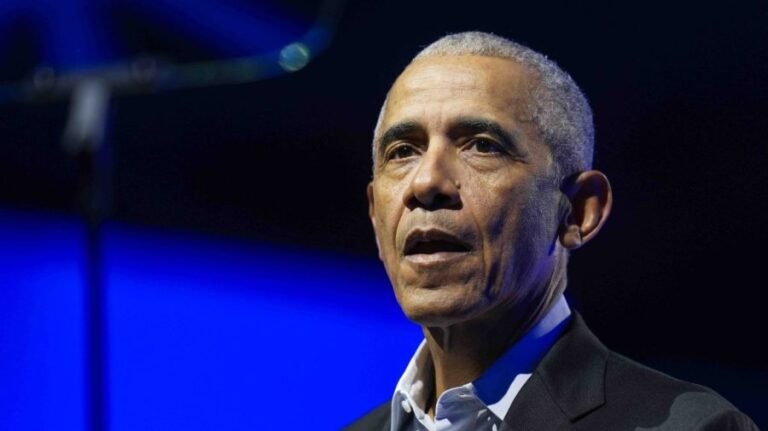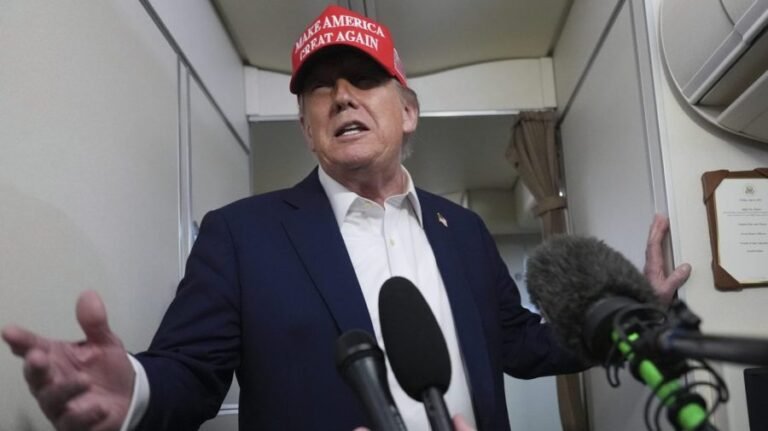
The curtain came down on the first phase of President Trump’s tariff and trade war earlier this week, when the U.S. announced a huge reduction in levies with China.
Washington and Beijing agreed to take 115 percentage points off the tariffs they had imposed upon each other’s exports at the apex of the brief trade war. The change leaves American tariffs on China at 30 percent and Chinese tariffs on the U.S. at 10 percent.
It is possible that the tariffs could climb again after a 90-day pause agreed between the two nations.
But the stage of the tariff battle that began with Trump’s April 2 “Liberation Day” announcement of steep levies against dozens of nations appears to be over.
Here are the winners and losers.
Winners
Treasury Secretary Scott Bessent
The Treasury Department secretary emerged as the single most effective advocate of a softer, shorter-term tariff approach — and his argument won the day.
Speaking about the deal with China, Bessent asserted that the sky-high tariffs had become “the equivalent of an embargo, and neither side wants that. We do want trade.’’
Bessent predicted last month there would be a de-escalation between the U.S. and China.
He became a counterpoint to trade adviser and Trump loyalist Peter Navarro, who is a vigorous proponent of high, long-term tariffs aimed at sparking a resurgence in American manufacturing.
Bessent won the internal battle without seeming to second-guess or undercut Trump — an important point with a president who is always on alert for signs of disloyalty.
Stock markets
Markets went into a near free fall after Trump’s “Liberation Day” announcement.
But they have recovered just as rapidly as the tariff threat has eased.
All three major indices have recovered to near, or beyond, the levels they were at before the president’s April 2 bombshell.
The broad-based S&P 500 is now in positive territory for 2025, albeit by a slim 0.3 percent. The Dow Jones Industrial Average and the tech-heavy Nasdaq composite are still below where they were at the start of the year. But the troughs they experienced following Trump’s initial announcement are fading from view.
The Nasdaq enjoyed another especially strong day Tuesday, rising roughly 1.6 percent.
The United Kingdom
The trade deal — in reality, a rather limited agreement covering mainly cars, steel and aluminum — was nonetheless a boon for the U.K.
Most experts predicted other nations — perhaps Japan or South Korea — might have been the first to conclude a post-April 2 agreement with Trump.
Britain got there first, with a deal reportedly clinched after a call from Trump to British Prime Minister Keir Starmer while the latter was watching his beloved Arsenal Football Club on TV. The pact underscores the idea of a transatlantic “special relationship.”
The deal was also a domestic boost to Starmer after his Labour Party fared poorly in local elections only days before.
Federal Reserve Chair Jerome Powell
Powell emerged as a winner by doing very little — specifically, by not engaging with Trump’s vigorous demands for more interest rate cuts.
At one point, Trump appeared to suggest he might try to fire Powell, even though the independence of the Fed seems clear-cut. Markets plunged again on that threat, and Trump duly backed off.
Powell’s calmness over rate cuts appears to be borne out by new data.
The consumer price index, a key measure of inflation, rose by 0.2 percent in April, a milder increase than many economists had expected.
Mixed
Trump
Trump unquestionably gains from the tariff detente with China and from the stock market recovery.
The problem, of course, is that the wounds were self-inflicted in the first place.
The lurching stock market and global tremors caused by Trump’s initial actions plainly added to the sense of instability that often surrounds him.
Also, virtually nobody believes that the manufacturing rebirth Trump heralded is now really going to happen.
That said, Trump’s backing-off may well limit the damage to him and his party — and there are still almost 18 months to go before the 2026 midterms.
China
The tariff turmoil has, on the one hand, given Beijing heartburn it could have done without.
The Chinese economy, for all the leadership’s recent attempts at diversification, remains susceptible to any hit to its trade with the U.S.
But the battle has also brought comfort to Beijing, too.
The Chinese stood up to Trump and, in the end, he had to sue for peace.
The president’s tough talk didn’t translate into actions that were able to truly intimidate China, and the episode showed American vulnerabilities, too.
The Chinese will certainly have noted, for example, Trump’s earlier admission that his decision to pause many of the tariffs announced on other nations on April 2 came, in part, because of flashing warning signs from the bond market.
Losers
Canada
The U.S.’s northern neighbors have still no solution at hand to a range of tariffs crisscrossing the border.
That leaves Canada especially at risk because the U.S. is by far its most important trading partner.
Trump has imposed tariffs on steel, aluminum and lumber, among other things, while Canada has hit back in kind.
Trump did inadvertently resuscitate the fortunes of Canada’s Liberal Party, however. Voters backed the incumbent party, which had lagged the Conservatives badly in the polls only months before, in part because of the Liberals’ perceived willingness to stand up to the American president.
But Canada still faces tough questions in the months ahead.
Peter Navarro
Navarro was always seen as a maverick among more conventional economists.
But around April 2, it seemed like his time had finally come.
Things look very different now, as Trump moves away from the harder line Navarro favors, in part because the effects upon the financial markets were so obviously negative.






